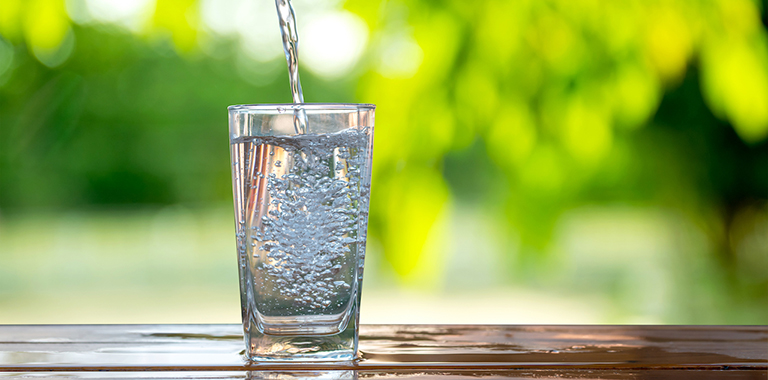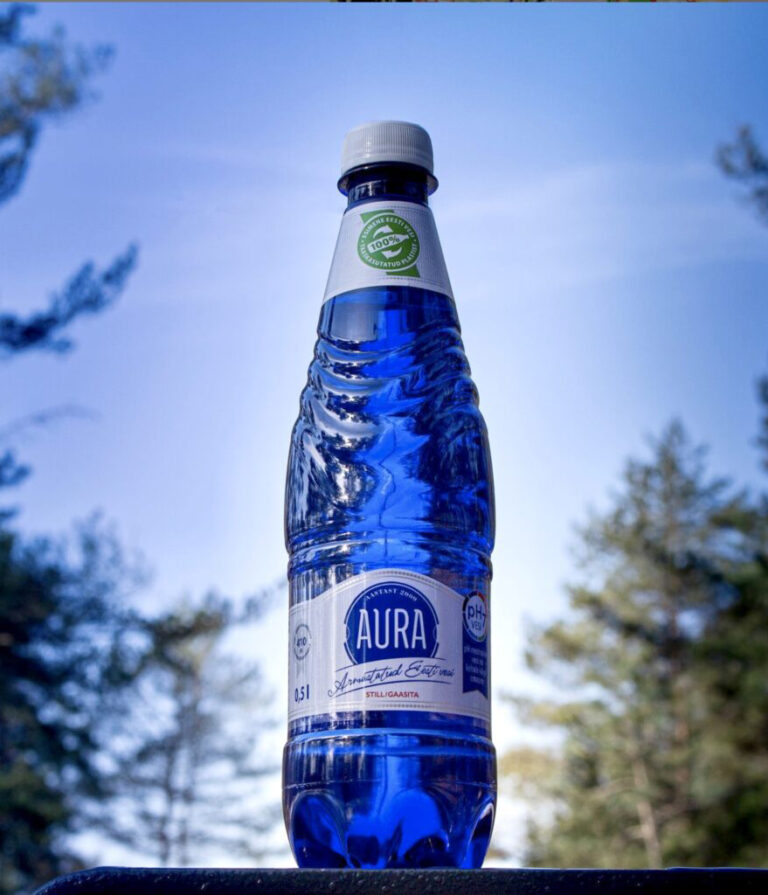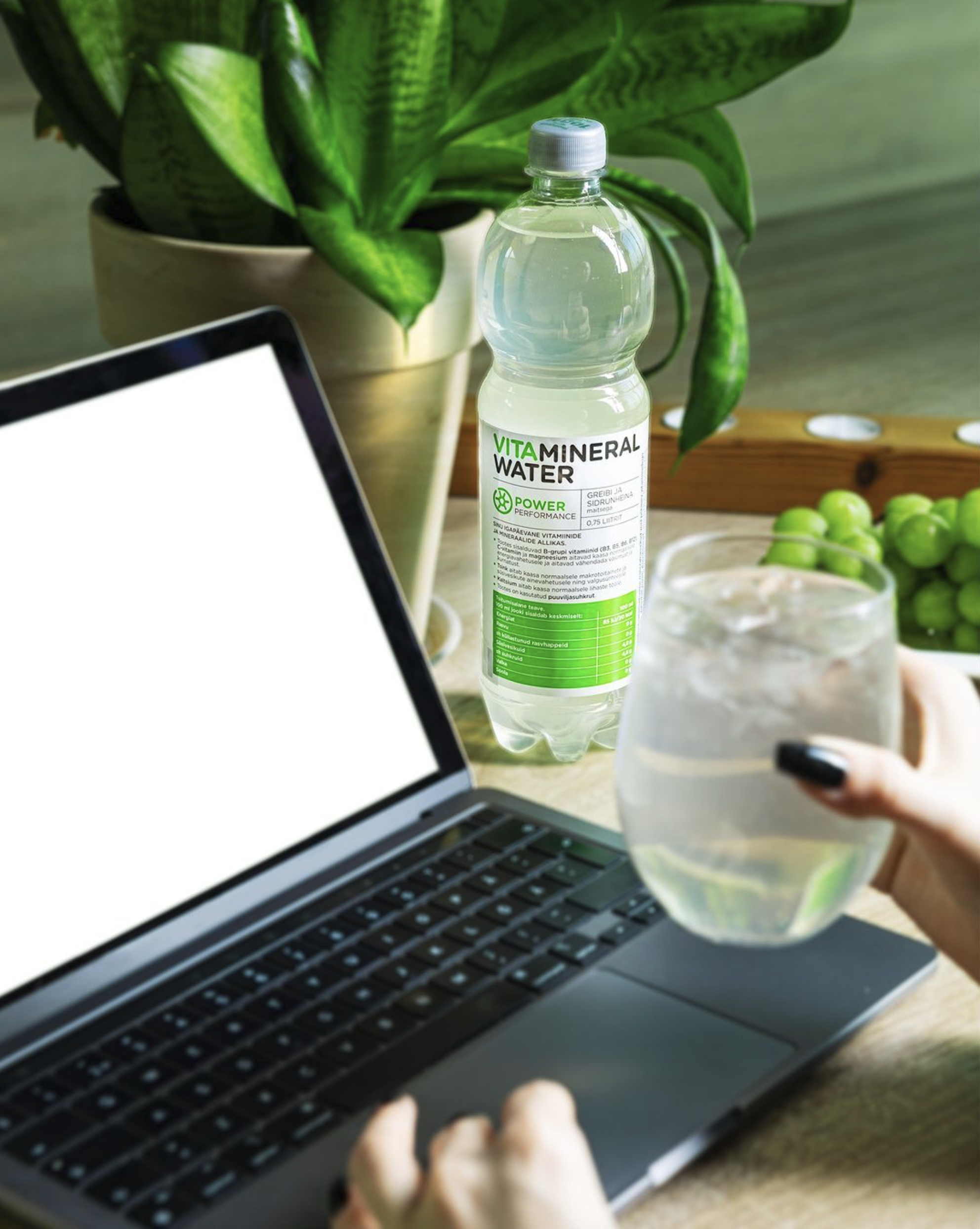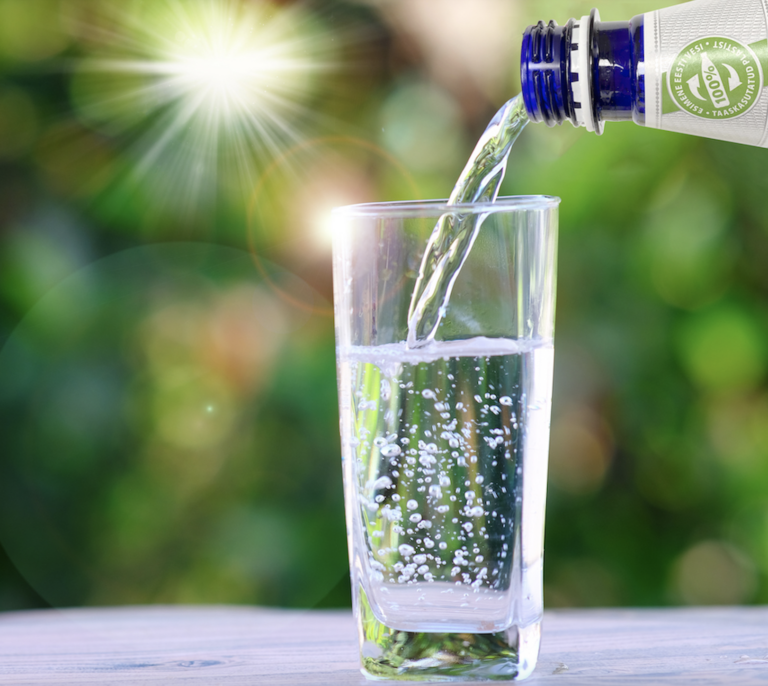
The World of Aura Waters
The Origin of Aura Water

A. Le Coq draws Aura water from the untouched depths of Southern Estonia, 410 meters deep in the Ordovician layer. The Ordovician water layer formed 505 million years ago, which is why our water is protected from external factors and rich in natural minerals.
Aura water contains all the original minerals characteristic of the Ordovician layer in this region. That is why Aura has become a beloved Estonian water, enjoyed by water enthusiasts of all ages for its soft taste.
In total, there are seven main groundwater layers in Estonia, starting from the uppermost: Quaternary, Upper Devonian, Devonian, Silurian, Ordovician, Cambrian, and Precambrian water layers.
The depth of the groundwater layers varies in different regions of Estonia compared to the surface. For example, in Northern Estonia, the Ordovician layer is 30-60 meters deep, while in Southern Estonia, the same water layer is located 400 meters deep.
Water layers that emerge to the surface, such as Lake Ülemiste, are nourished by precipitation and are therefore directly influenced by human activities and pollution. The underlying water layers, in turn, are nourished by the water from the upper water layers, where the water does not circulate as rapidly as in lakes. In these water layers, which are located at depths of 300-400 meters, groundwater replenishment occurs very slowly, and the water resource there is practically non-renewable. Thus, the deeper the water comes from the underground, the purer and more protected it is from external factors.
Our bodies consist of about 60% water, and therefore drinking water is as important to us as breathing. Water is your primary beauty product, which must be clean and high-quality. Aura’s pH-neutral water is exactly that.
As a science-based beverage producer, we aim to be part of a balanced diet and support human well-being with our innovative drinks.

Flavored Waters and Functional Waters
The variety of water options available on store shelves can be overwhelming at first glance. There are sparkling and still waters, private label products, natural mineral waters, enhanced waters, flavored waters, functional waters, and all of this in different sizes of packaging.
Setting aside sparkling and still waters, as well as natural mineral water, the range of flavored and enhanced waters is very diverse. The key to navigating through them is reading the labels. Although they can all be generally referred to as enhanced waters, they are quite different:
- Near water: This category falls between water and carbonated beverages. Over the past couple of decades, the trend has been towards flavored waters, as consumers seek alternatives to carbonated drinks but still desire some flavor along with hydration. These waters have a slightly sweet undertone and may contain fruit juice and extracts. Compared to carbonated beverages, they have half the calories and a less intense flavor, making them more refreshing and easier to drink. A good example is the Aura Fruit series flavored waters.
You can also make your own near water at home by mixing Aura bottled water or good-quality tap or well water with Aura fruit juices and freshly crushed fruits. Add a little honey if desired, and your refreshing near water is ready!
- Enhanced waters: These waters have at least one component in addition to providing hydration or flavor. They offer more than just a mild taste, as they can contain minerals, vitamins, juice, and/or natural extracts. For physically active individuals, Aura magnesium water is an ideal thirst quencher. This pure water sourced 410 meters deep from Estonia’s underground is enriched with magnesium, which helps reduce fatigue and tiredness, contributes to normal muscle function, and helps maintain normal bones. The still water is packaged in a convenient 0.75-liter sports cap bottle, making it easy to take along when exercising.
- Functional waters: The newest and most versatile waters in this category are functional waters. They support an active lifestyle and contain plant extracts, vitamins, and mineral nutrients that contribute to normal energy metabolism and help reduce fatigue and tiredness. Vitamineral Water is a vitamin-based drink derived from mineralized water, developed to meet various needs of the human body. It is an excellent alternative to carbonated drinks. Vitamineral Power is a powerful vitamin drink, with B-group vitamins (B3, B5, B6, B12), vitamin C, and magnesium contributing to normal energy metabolism and helping reduce fatigue and tiredness. Zinc contributes to normal macronutrient and carbohydrate metabolism and protein synthesis. Calcium contributes to normal muscle function.

Among innovative waters, infusion water is a popular choice. It is lightly carbonated water with a small amount of fruit juice and based on plant extracts. With low calories and pleasant taste, infusion water is flavorful and offers refreshing revitalization on a hot summer day.
In 2023, Aura introduced Dr. Active Sparkling Flavored Waters to its product family, which, in addition to juice, also contain significant amounts of vitamins and magnesium, important components of an adult’s daily needs.
Bottled Water vs Tap Water
Should you choose bottled water or prefer tap water? While environmentally conscious individuals usually prefer tap water, there may be cases where bottled water is a better choice. One important argument is the quality and purity of bottled water. Unfortunately, tap or well water in some areas of Estonia may not be of sufficient quality to be the best and most palatable for the body. Often, this can be recognized by the smell of the water.
Another argument in favor of bottled water is convenience. Bottled water is easy to carry and consume, especially when exercising, hiking, or traveling. If you are away from home and do not have access to your preferred tap water, as an environmentally conscious consumer, you can confidently choose Aura’s pure still water. Since 2021, all Aura waters in blue bottles have been produced in 100% recycled plastic bottles.
The deposit system collects used plastic bottles, which are crushed into flakes and used to make new bottle preforms. These preforms are then blown into new bottles and filled with pure and soft Aura water sourced from 410 meters deep underground. The use of 100% recycled plastic water bottles is one step towards fulfilling our commitment to future generations to make the world a better place to live. The goal is for all drink bottles produced by A. Le Coq to be made of 100% recycled plastic by 2030.
How much water should you drink?
It is reasonable to drink a little water throughout the day, aiming for a few glasses, or a glass or two more during very hot weather.
The human body is composed of over 60% water. An adult needs 32 ml of water per kilogram of body weight per day. If you weigh 60 kg, your daily water requirement would be 60 x 32 = 1920 ml. Throughout the day, the food and drinks you consume also contribute to your water intake (for example, 100 g of fresh bread contains about 42 g of water, while 100 g of cucumber contains 96-97 g of water; beverages such as tea, juices, and dairy products also provide a significant amount of water). Thus, for a normal eater, the amount of water obtained from food and drink is around 1100-1200 ml. If we subtract the water obtained from food and drink, as well as the water produced through metabolism, from the 1920 ml, we are left with an uncovered amount of 500-600 ml, equivalent to 2-3 glasses of water.
Water helps eliminate toxins from the body and delivers necessary nutrients to all cells. Even slight dehydration can manifest as fatigue and low energy levels. Therefore, consuming the right amount of water is important as it also contributes to metabolism. It is important to remember that normal eating and drinking satisfy the body’s water needs. When thirsty, plain and additive-free drinking water should always be preferred.
Source: Zilmer, Mihkel; Lill, Anne, “Normaalne joomine” (Normal Drinking).

